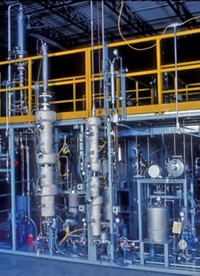Advertisement
Grab your lab coat. Let's get started
Welcome!
Welcome!
Create an account below to get 6 C&EN articles per month, receive newsletters and more - all free.
It seems this is your first time logging in online. Please enter the following information to continue.
As an ACS member you automatically get access to this site. All we need is few more details to create your reading experience.
Not you? Sign in with a different account.
Not you? Sign in with a different account.
ERROR 1
ERROR 1
ERROR 2
ERROR 2
ERROR 2
ERROR 2
ERROR 2
Password and Confirm password must match.
If you have an ACS member number, please enter it here so we can link this account to your membership. (optional)
ERROR 2
ACS values your privacy. By submitting your information, you are gaining access to C&EN and subscribing to our weekly newsletter. We use the information you provide to make your reading experience better, and we will never sell your data to third party members.
Environment
Benefits Of Biochar
June 27, 2011
| A version of this story appeared in
Volume 89, Issue 26
The article “Capturing CO2” describes a number of absorbent molecules (C&EN, May 2, page 30). I’m disappointed, however, that biochar was not mentioned among the possibilities. The article does state in its next-to-last paragraph that “cellulose and sawdust can be used to make activated carbon with record-setting carbon dioxide uptake.” This comes close, but it doesn’t really represent biochar, about which much is misunderstood.
Some significant aspects are that biochar and activated carbon are not the same. Conditions of preparation differ, and biochar is considerably cheaper. Biochar can be made from a greater spectrum of sources including farm and forestry waste, municipal waste, and algae.
Biochar is considerably cheaper than the specialized absorbents described in the article. CO2 absorption by biochar occurs by photosynthesis during the growing of the biomass. Although this is a slow and not highly efficient process, the cost of naturally growing biomass is much less than that of these specialized absorbents. Furthermore, the absorbents discussed do not permanently capture CO2. It must be subsequently released and then disposed of by other means.
With biochar, the carbon from CO2 serves as a soil additive where it remains in place for very long periods of time. Thus, I refer to the practice as “coal mining in reverse,” whereby one is removing CO2 from the atmosphere and burying its carbon in the ground. In the ground, biochar serves an agriculturally useful purpose as a template for the growth of fungi and bacteria, shown to enhance plant growth. In addition, it aids water retention, absorbs pollutants, and helps retain fertilizer, decreasing its polluting runoff.
Consequently, biochar serves to decrease the amount of fertilizer (as well as compost) needed, thereby decreasing the energy needs to manufacture the fertilizer. As a result of its role in enhancing biomass growth, biochar serves to increase biomass resources, which serve as CO2 absorbers. It also brings into use marginal land not otherwise suitable for agriculture. Thus, in considering biochar, its virtue as an agricultural aid may be even more important than that of a CO2 absorber.
By Richard S. Stein
Amherst, Mass




Join the conversation
Contact the reporter
Submit a Letter to the Editor for publication
Engage with us on Twitter